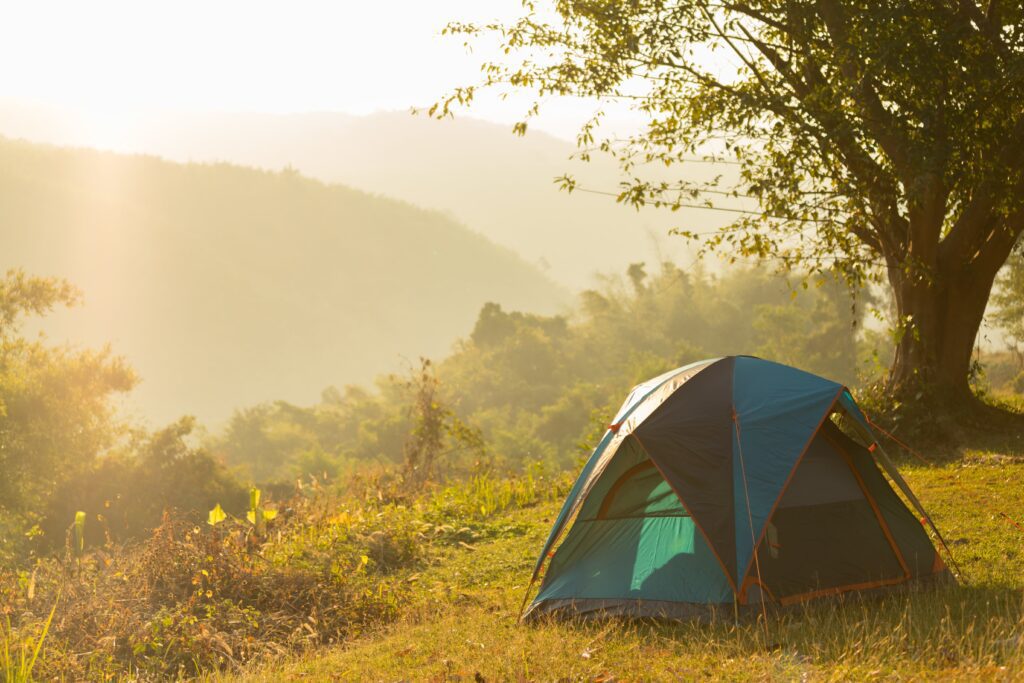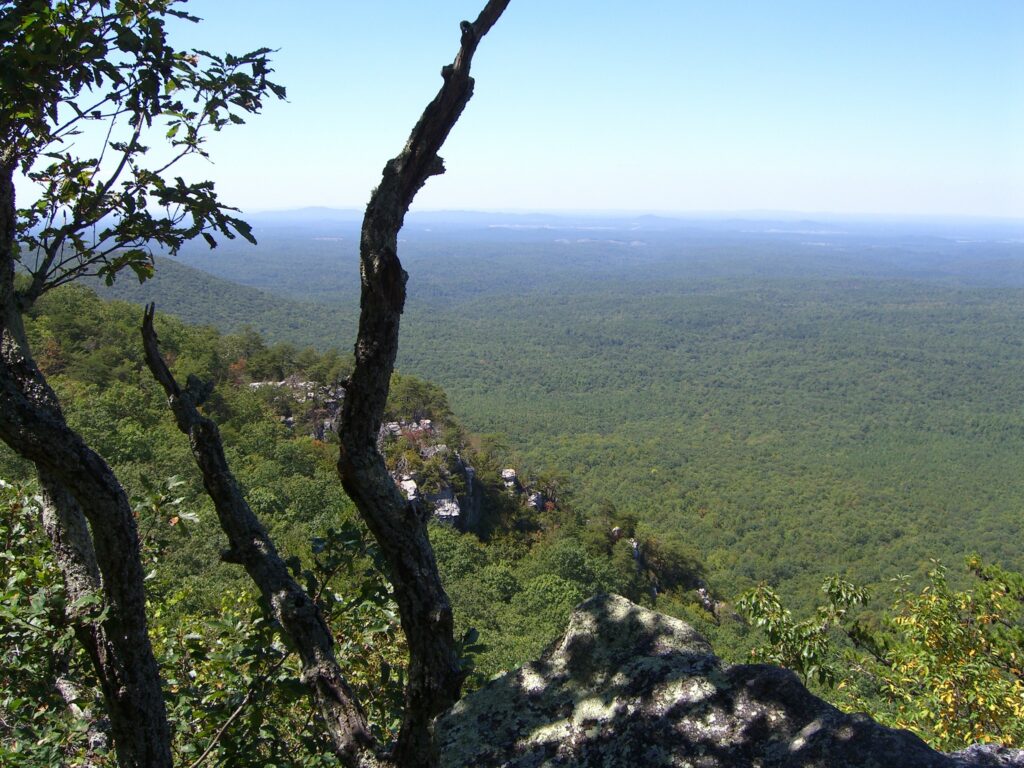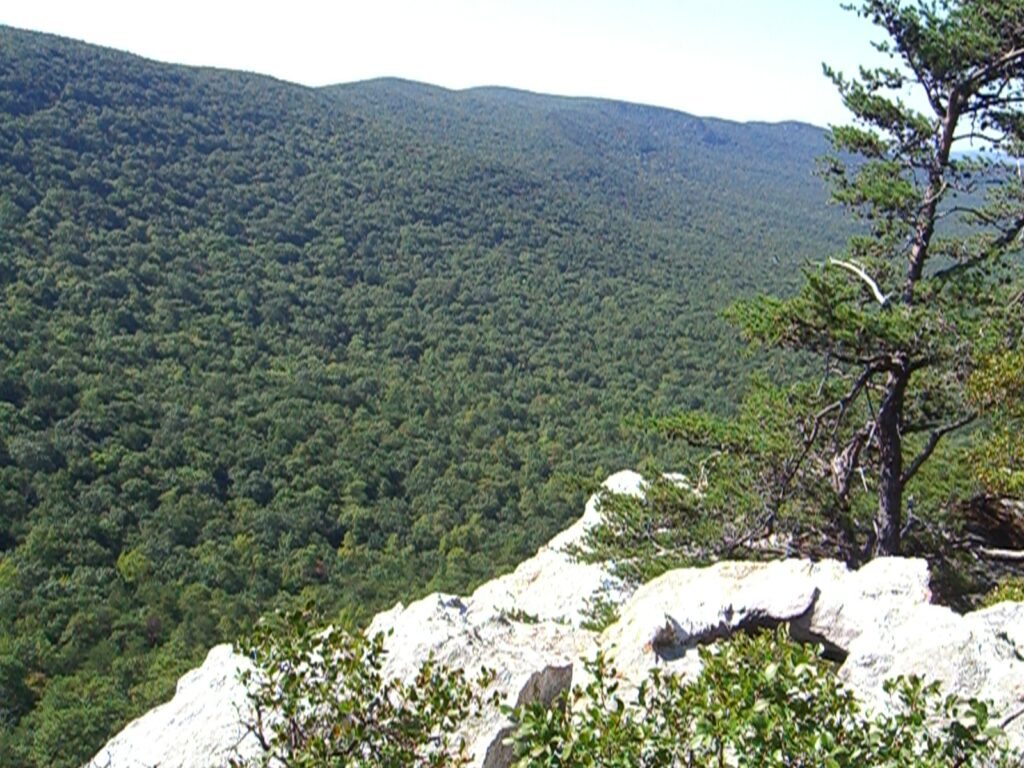Whether you’re a seasoned backpacker or a wide-eyed newbie itching for your first solo expedition, prepare to be captivated by Alabama’s untamed wilderness on the Skyway Loop Trail. Also known as the Pin-Chin-Sky Loop Trail, brace yourself for a jaw-dropping 20-mile loop that immerses you in the mesmerizing beauty of Talladega National Forest and Cheaha Wilderness – perfect for a nature-filled weekend like no other.
Now, you might be wondering, why choose THIS trail? Well, it’s a trail that packs a triple punch! You’ll explore not one, not two, but three trails – the Pinhoti Trail, Chinabee Silent Trail, and Skyway Loop Trail. Together, they form an unbeatable combo that showcases Alabama’s diverse landscapes in all their glory. From awe-inspiring scenic overlooks to picture-perfect waterfalls begging to be captured, and even a natural swimming hole to cool off in, this trail has it all.
Are you ready to take your hiking experience to new heights? Here’s your ultimate guide to squeezing every ounce of adventure out of this remarkable journey.
Setting Up Camp
Looking for a place to pitch your tent? The Pinhoti and Skyway Loop Intersection Campgrounds are just under two miles from the start of the Skyway Loop Trail. There are complete water and electricity hookups, as well as plenty of log cabins and A-frame chalets available to rent for extended stays. Once you set up your home base, there’s plenty to do, from relaxing at the nearby picnic areas to enjoying the local watering hole for a picnic with a view.

Little Caney Head and Turnipseed are two other campsites along the trail. Little Caney Head is near Nubbin Creek and the Cave Creek trail and offers six fire pits – be aware this site is usually crowded in season. Turnipseed has one group camping area, eight campsites and vaulted toilets.
If you want to avoid crowds, there are multiple rural camping sites every few miles along the trail. Just remember to leave no trace while camping and follow all local regulations. Preserving and maintaining the beauty of the trail and the wilderness is essential.
Hiking the Trail
There are multiple starting points for traversing the loop, but the most popular is beginning from the Adams Gap Trailhead and hiking the loop counter-clockwise. However, beginners should consider hiking it clockwise for an easier trek across the terrain. Either way, you’ll start and finish at Adams Gap. Next, your journey will take you through the Cheaha Wilderness and Talladega National Forest, with notable stops such as the Stairway to Heaven (a rock garden with a steep incline) and scenic overlooks showcasing old-growth forests and creeks. During the late spring, the region blooms with wildflowers, such as mountain laurel, goldenrod, and flame azaleas – fiery orange and red blossoms at higher elevations.


If you’re an avid bird watcher, keep your eyes peeled for blue-headed vireos, nuthatches, cedar waxwings, and sharp-shinned hawks. The region is also home to wild turkeys and white-tailed deer. And, of course, you might spot a black bear or two, so follow best practices for

Nothing beats cooling off after a long hike, and the Skyway Loop Trail crosses paths with multiple waterfalls and swimming holes. Take a dip at Cheaha Falls or go upstream to the recreational watering hole, Devil’s Den Falls, for a refreshing swim on a hot day. It’s located on the Chinnabee Silent Trail, that intersects roughly four miles from the Skyway Trail Crossing. While the terrain can be a tad challenging the closer you get to Devil’s Den, the views of the falls are worth the hike.
Top 5 Solo Backpacking Tips
- Share your itinerary and location with your emergency contact. Safety is a top priority when solo traveling, so share current and updated itinerary plans and sites with your emergency contacts in case of any unexpected weather events or health emergencies.
- Know the weather and terrain before you go. Most hikers may check the weather before going, but things can shift quickly. In addition, the Skyway Loop trail has multiple creek crossings that can overflow with the rains, so be sure to play it safe.
- Bring practical and protective tools for every scenario. Keep a toolkit for situations beyond your control, from a pocket knife to first aid, and always expect the unexpected.
- Bring a cellphone, satellite phone, and GPS locator beacon. One of the best ways to feel confident and safe on the trail is to have a fully charged cellphone or satellite phone and personal locator beacon.
- Respect the natural habitat of the wildlife. Watching animals in their natural habitat is incredible. Still, it’s important to remember that the trail is their home and respect nature by keeping a healthy distance and not leaving any litter from your camp behind.
